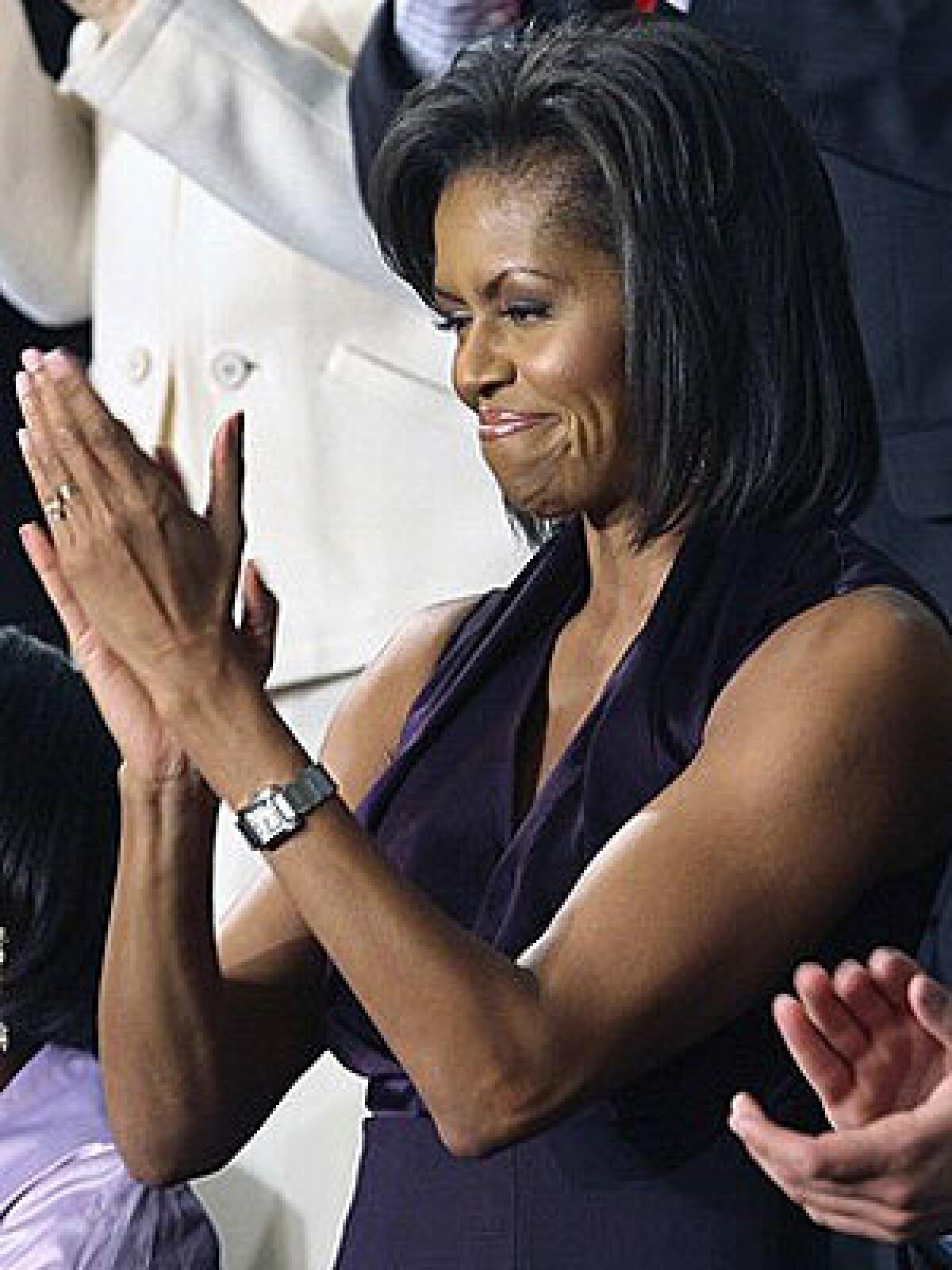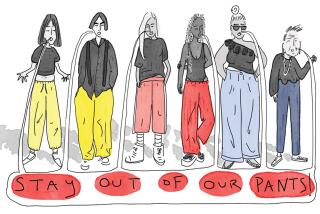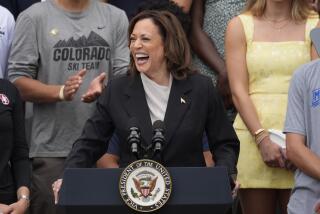Michelle Obama’s toned arms are debated

- Share via
First Lady Michelle Obama stands tall and regal in her official portrait, a double strand of creamy pearls around her neck, her figure clad in a fitted Michael Kors dress. But there’s one aspect of this seemingly benign photograph that’s causing something of a commotion, and it lies in that exposed 10-inch-or-so stretch between her shoulder and elbow. The first lady is buff, and she’s not afraid to show it.
Her curvy biceps have become something of a lightning rod for remarks from both sexes in a larger discussion of how much female muscle constitutes too much. While some praise Obama as a role model in a world gone obese, others say she’s gone too far in displaying the fruit of her workouts. Read one online forum comment: “There is nothing uglier than manly, muscular arms on a woman. Mrs. Obama should be hiding them instead of showing them off.”
Even more vitriolic comments have been aimed at Madonna, whose über-ripped physique is a perennial favorite subject for photographers (the British press reported that her copious hours in the gym factored into the performer’s divorce). “Madonna’s arms defy logic, actually get grosser,” reads one Web headline accompanying a picture of the singer, sleeveless, revealing her sculpted physique.
Why do we care so much? The issue speaks volumes about how men and women view the parameters of femininity and strength.
“In some ways it’s kind of an old, tired way of thinking about women and power and boundary policing -- when you can display that power and when you can’t, or when it’s appropriate,” says Sarah Banet-Weiser, an associate professor at the USC Annenberg School for Communication.
The idea of how much muscle is too much is entirely subjective, and people often have a visceral reaction to what they do or don’t like. In the Obama-Madonna equation, it’s not surprising that few are in the Madonna camp, considering her well-defined build and low body fat, coupled with her age -- few 50-year-old women look like that.
Says personal trainer Ramona Braganza, a member of Gold’s Gym Fitness Institute, “She’s burning so many calories constantly and her metabolism’s sky-high. I’m not being hard on how she looks, but sometimes it’s nice to have a little body fat as you get older. It’s just healthier looking, and people almost look younger when they do that.”
And though strong legs and a flat belly are often interpreted as sexy features on a woman, bulging biceps . . . not so much. “It crosses the boundary from having sexy, toned arms to having arms that display, ‘Hey, I’m working on being strong.’ ” Banet-Weiser says. “The evidence of that work . . . is quite threatening.”
For Obama (who told People magazine she hits the gym almost every day), the decision to wear sleeveless designs that show off her physique sends a strong message, says Janet Lee, deputy editor of Shape magazine. “If she was at all self-conscious about her body, she wouldn’t put it out there.” And that may be intimidating and unsettling to some who are used to seeing first ladies more covered up.
Yet arms are the one body part women often don’t mind flaunting, Lee adds: “They may have issues with their legs or their midriff, but they can get away with showing their arms.” When they’re firm, Lee says, it’s like waving a flag. “It’s your fit calling card, and it lets people know that if your arms are in shape, your body’s in shape.”
The first lady’s taut form may be forcing women to think about their upper-body musculature, but let’s not forget a potentially bigger influence: fashion. The sleeveless season is almost upon us. “This is the time of year everyone’s starting to think about bikinis and tank tops,” Lee says. “Women are definitely wanting to firm things up so they’ll look toned and fit. The panic will be starting soon, no doubt.”
Though that fear may send them scrambling for the nearest lat pulldown machine, most women won’t be hitting the weights that hard. Because for all this talk of scary female muscles taking over the world, many women still believe that if they hoist more than 10-pound dumbbells for a few reps, they’ll look as massive as the Incredible Hulk. (That, by the way, is next to impossible unless the hoisting is accompanied by copious amounts of steroids.)
Even celebrities don’t seem to want much upper-body definition (when not training for a specific role). Survey any red carpet lineup of stars clad in sleeveless and strapless gowns and you’ll see thin arms, but not necessarily muscular ones. Braganza says some of the celebrities she trains -- especially those who have an athletic background -- don’t fear a muscle striation or two. Braganza trained Anne Hathaway before this year’s Oscars (the actress appeared in a silvery strapless Armani). She says Hathaway wanted to feel healthy overall, “toned, but not in a very sculpted way.”
Perhaps women ultimately fear the kinds of reactions Nicole Ball fields continually. While the Alberta, Canada-based competitive female bodybuilder is not as muscular as some of the sport’s more extreme contestants, baring her ripped arms in public never fails to prompt reactions.
“You can see out of the corner of your eye, you get looks,” she says. “Some people say, ‘Women shouldn’t look like that.’ ” Where’s the happy medium for women? “In society I don’t think there is one,” she says. “Everybody should do what makes them feel secure in themselves and doesn’t harm them.”
For some women, that may mean opting for plastic surgery instead of -- or in addition to -- lifting weights. When toned, the area between the elbow and shoulder communicates strength and vigor. But when skin begins to sag, it speaks of nothing but age. And the sad fact is that no amount of tricep dips will do anything to remedy the drooping flesh at the back of the arm when it becomes impervious to exercise. Maybe that’s why brachioplasty -- an arm lift -- seems to be growing in popularity.
“There’s no exercise that can get rid of the real problem,” says Dr. Lawrence Reed, a Manhattan-based plastic surgeon who teaches at New York Presbyterian Hospital. “It’s just hanging skin and extra fat” -- which he refers to as “visual stigmata of the aging process.”
As the first lady continues to go sleeveless -- she graces the March cover of Vogue, again showing some bicep -- only time will tell if her workout habits influence the culture. Lee, for one, hopes they do: “I like that we have these images of strong women,” she says. “I’d much rather see that than women who have no muscle tone. I’d rather see a million Michelle Obamas.”


